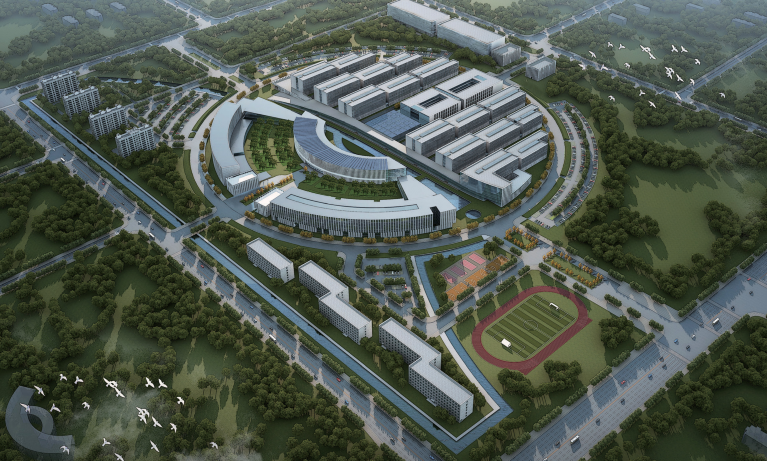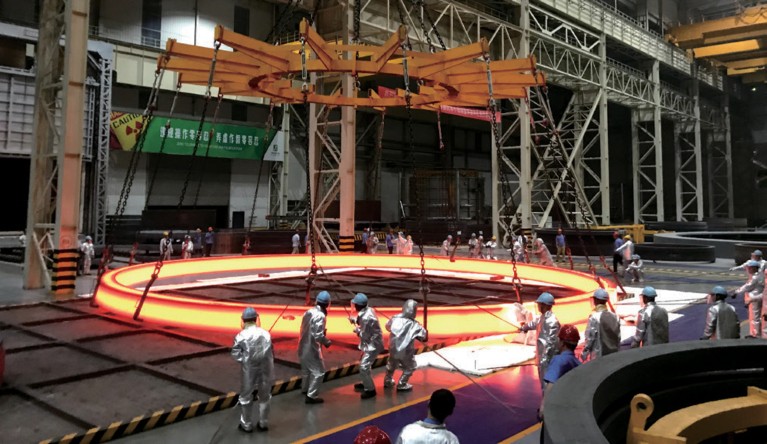
Credit: Shenyang National Laboratory for Materials Science
Launched in 2001 as a comprehensive platform for basic materials research, SYNL continues to grow in international importance as a leading centre in both fundamental research and the continual exploration of new materials.
SYNL researchers have contributed to more than 6,000 publications in journals listed on the Science Citation Index (SCI), gaining more than 202,000 citations. More than 300 papers are also cited over 100 times each, featuring, for example breakthroughs in the study of nanocrystals and nanostructures.
In a solution for the traditional trade-off between strength and ductility in metals, two types of novel nanostructures have been identified, including nanotwinned structures and gradient nanograined structures.
Recently, a new grain-size effect on structural stability was discovered in nanograined metals, shedding light on the inherent instability in nanostructured materials. The stability of nanograined structures in pure metals, under both thermal and mechanical stimuli, increases, rather than reduces, with decreasing grain sizes below a critical value. This unusual stability of ultra-fine nanograins (typically below 100 nm) stems from an autonomous grain boundary relaxation process. New methods to enhance the stability of nanostructured materials, greatly advance their processing and technological applications.
As one of China’s biggest bases for transmission electron microscopy research, SYNL has made remarkable achievements in proposing techniques for imaging light atoms, and the direct visualisation and quantitative analysis of material structure. The latter has enabled the discovery of five-fold symmetry and the associated icosahedral quasi-crystals, in addition to a unique series of metal oxides. SYNL recently became the first to visualise the atomic morphology of flux closure in ferroelectrics, which indicates that engineering strain at the nanoscale may lead to the development of nanoscale ferroelectric devices.

An inverse pole figure (IPF) map by an electron backscatter diffraction (EBSD) detector of the trapezoidal nanostructure, which underwent an annealing process at 160ºCCredit: Shenyang National Laboratory for Materials Science
Establishing new frontiers
Mechanical properties of materials constitute another major direction in SYNL, especially on strength-ductility synergy and fatigue of materials. Several mechanical modes have been proposed or developed, many representing results of non-homogeneous materials, such as amorphous materials, ultra-thin materials and metal matrix composites.
Physical and chemistry investigations have also been performed on permanent magnets, caloric materials, nanocapsule catalysts, spintronic as well as ferroelectric films. A variety of advanced research infrastructures are employed to uncover their intrinsic physical mechanisms.
Colossal barocaloric effects (CBCEs) have been recently discovered in a class of plastic crystals, while the established microscopic mechanism paves the way to next-generation solid-state refrigeration technologies.
Investigation into low dimensional functional materials, and their meso-scopic systems, is an emerging direction at SYNL. International researchers have been attracted to SYNL to realise conceptual nanoelectronic devices including gate tunable two-dimensional magnetic semiconductors and ultra-fast carbon-Ge-Si hybrid transistors, among many others.
Given that materials connect and influence both our society and nature, SYNL has always promoted their sustainability to create a better balance between the two worlds. Plainification of materials, a greener alternative to alloying to tailor the properties and functionalities of metals, was recently put forward. Substantial efforts by SYNL have focused on the reduction of alloying, especially by substituting the toxic and rare-to-source elements.
Strengthening institutional networks
In 2017, the research thrust at SYNL was restructured to better meet contemporary societal requirements. 12 new divisions were formed: Materials Kinetics, Materials Structure and Defect Characterization, Metallic Nano-Materials, Advanced Ceramics and Composites, Advanced Carbon, Bio-based Materials and Biomimetic Architecting, Functional Materials and Devices, Advanced Steel Materials, Computational Materials Design, Light Metal Materials, Mechanical Behavior of Materials, and Joint Research.
Another initiative was to build bridges with businesses and universities worldwide. Several joint research subdivisions have been established with Chongqing University, Northeastern University (Shenyang), Shanghai Jiao Tong University, City University of Hong Kong, and Shanghai Synchrotron Radiation Facility. Extensive collaborations between SYNL and national key enterprises have also been established to tackle key technical issues.
Building on this connection and cooperation, a large non-welded stainless steel ring of a 15.6 m diameter and weighing 150 tonnes was developed this year, a key component for major equipment in nuclear power, hydropower, and wind power plants.
SYNL’s successful completion of a non-welded stainless steel ring at a diameter of 15.6m as the backbone of China’s fourth-generation nuclear facilitiesCredit: Shenyang National Laboratory for Materials Science
With more than 270 staff, 55 research teams, and 70-plus guest researchers from across the world, SYNL looks to double its team in five years, and host around 500 guest researchers. In order to better prepare for the future, a 496,000 square metre new campus is also under construction, with 12 buildings for research and testing, libraries, laboratories, classrooms and dormitories. To be completed by the end of 2020, it will be able to accommodate 2,000 researchers and students.



